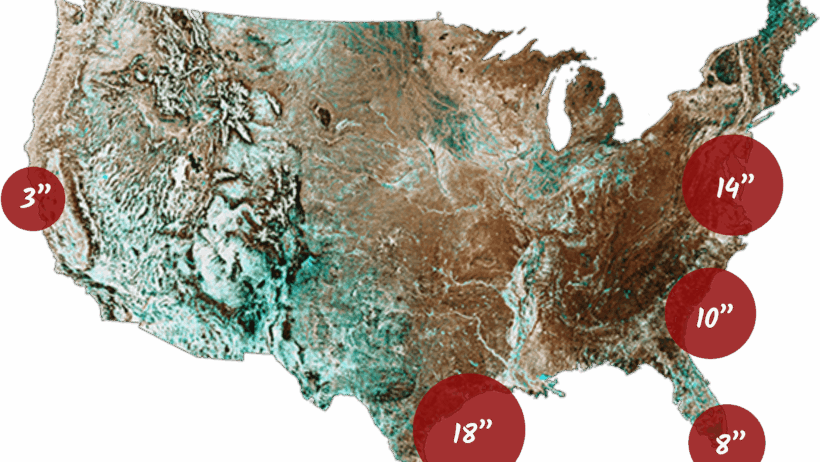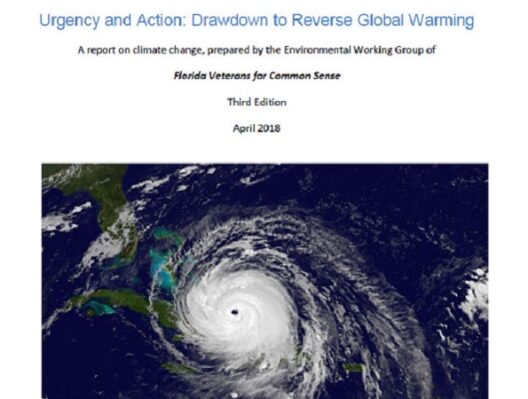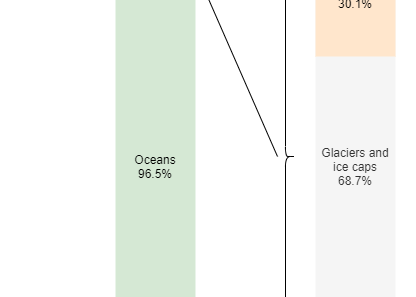As the balmy winds of Florida continue to caress its sun-kissed shores, an insidious reality threatens the state’s idyllic landscape: sea level rise. With its extensive coastline, Florida is particularly vulnerable to the ramifications of this gradual but persistent phenomenon. Crucial to both its residents and its thriving tourism industry, understanding the intricacies of sea level elevation in the Sunshine State has never been more pressing.
Current estimates indicate that Florida is experiencing a dramatic increase in sea levels, primarily attributed to climate change. This environmental upheaval directly impacts coastal communities, ecosystems, and economies, raising the urgency for informed discourse around effective mitigation strategies and adaptive planning.
In examining the local impacts of rising sea levels in Florida, one must delve deeply into the science behind this phenomenon, its historical context, and the urgent calls for action that reverberate across the state.
The Science of Rising Waters: Understanding Sea Level Dynamics
Before delving into the implications of rising sea levels, it is essential to understand the scientific principles underlying this phenomenon. Sea level rise is primarily driven by two factors: thermal expansion of water and the melting of ice sheets and glaciers. As global temperatures escalate, ocean water warms and expands, while vast ice reserves in places like Greenland and Antarctica succumb to unprecedented melting.
In Florida, localized factors exacerbate these global trends. The state’s geology plays a significant role, as its land is relatively flat and porous. This allows for both aquifer depletion and the ‘sinking’ of land due to subsidence. Furthermore, Florida’s unique coastline, characterized by low-lying areas and barrier islands, leaves it exceedingly susceptible to flooding and erosion.
As reported by experts, sea levels around Florida have risen by approximately eight inches since 1950, and projections indicate an increase of one to two feet by 2060. These changes are not merely theoretical; they are visible, with the impacts already manifesting in numerous ways within communities along the coast.
Flooding and Erosion: The Immediate Threats
Rising sea levels lead to persistent flooding in coastal areas, particularly during king tides and storms. Electrolyzed water levels inundate residential districts, erode public infrastructure, and impact freshwater supplies. This disruption poses direct risks not only to properties but also to the safety and wellbeing of residents.
Areas like Miami and Fort Lauderdale have already begun experiencing recurrent flooding, necessitating major investments in resilient infrastructure. Enhanced drainage systems, elevated roads, and seawalls have become essential adaptations, yet the cost associated with these upgrades can be staggering. Local governments are forced to grapple with budgetary limitations in an era where climate resilience must take precedence.
The long-term consequences of erosion, exacerbated by rising sea levels, also threaten Florida’s dynamic ecosystems. Extensive beach erosion disrupts habitats for wildlife, contributes to diminished biodiversity, and can even damage marine life crucial to the fisheries industry. The loss of these coastal ecosystems can destabilize food webs, ultimately affecting human populations reliant on these resources.
Economic Ramifications: The Financial Toll of Rising Seas
The looming threats of sea level rise in Florida extend beyond the environmental and societal realms, with stark economic implications. Properties situated within flood-prone zones face plummeting real estate values, due to both the risk of flooding and mounting insurance premiums. The insurance industry is already feeling the impact, as providers reassess their policies amid increasing claims related to weather events intensified by climate change.
Tourism, a cornerstone of Florida’s economy, is also in jeopardy. The state’s beaches, iconic sites that attract millions each year, are at risk. Unprecedented erosion could diminish the aesthetic allure of these coastal havens. Fewer tourists could mean less revenue for local businesses, creating a domino effect that affects employment and overall economic stability in these regions.
Proactive Measures: Adapting to the Challenge
In light of these challenges, it is crucial for Florida to adopt a proactive approach to climate adaptation and resilience. State and local governments are beginning to formulate comprehensive plans that integrate climate considerations into urban development, flood management, and infrastructure investments.
Community engagement plays a pivotal role in fostering resilience. Local leaders must involve the public in discussions about climate adaptation strategies, encouraging grassroots initiatives that empower residents to contribute to solutions. This inclusiveness not only enriches the policymaking process but also builds an informed citizenry committed to environmental stewardship.
Moreover, innovative solutions such as creating living shorelines, enhancing natural buffers like mangroves, and deploying smart technology for predictive analytics must be considered. These methods allow for more sustainable adaptation practices while ensuring the preservation of Florida’s diverse ecosystems.
Conclusion: A Call to Action
As Florida faces the inexorable rise of sea levels, a collective effort is required to confront this escalating threat. Awareness, education, and action are critical. The time to address the myriad challenges presented by rising seas is now. Through collaboration among residents, local governments, scientists, and environmental organizations, the Sunshine State can foster a sustainable future—one that honors its natural beauty while safeguarding the lives and livelihoods of its inhabitants.








